|
View as a webpage
|

Dynamo Pond, Bishop Field Office
|
|
ISSUE 974- October 29, 2021
|
|
|
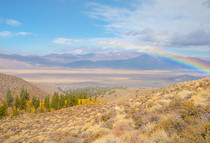
The town of Bodie is not the only thing that feels haunted!
The high desert landscape has a haunting beauty that has inspired conservation partners and adventure seekers from around the country. The Bodie Bowl Area of Critical Environmental Concern is managed by the BLM and located in the Bodie Hills. The area provides habitat for numerous wildlife species, forage for livestock grazing, and includes the ghost town of Bodie (a State Historic Park). (BLM CA Facebook)
|

Watch out for these spooky scorpions!
Did you know scorpions fluoresce under ultraviolet light, such as an electric black light or natural moonlight. The blue-green glow comes from a substance found in the hyaline layer, a very thin but super tough coating in a part of the scorpion’s exoskeleton. You’ll want to keep your distance though! Scorpion stings can be very painful, may need treatment, and in rare instances, can be fatal! They can be found on many BLM California public lands, especially in southern California. (BLM CA Facebook)
|

13 Awesome facts about bats
They’ve been called creepy, scary and spooky, but bats are an important species that impact our daily lives in ways we might not even realize. From pollinating our favorite fruits to eating pesky insects to inspiring medical marvels, bats are heroes of the night. Bat Week - held the last week in October - celebrates the role of bats in nature and all that these amazing creatures do for us. (DOI Blog)
|

Recreate responsibly when camping in the Imperial Sand Dunes
The Imperial Sand Dunes Recreation Area is a great place to relax, unwind and enjoy a beautiful, outdoor desert camping experience. As we head into the busy recreation season, the BLM would like to remind the public this popular destination is a shared space to be actively enjoyed by many and reserving a space or “ghost camping” by leaving camp gear unattended on BLM-managed public land is prohibited. (BLM CA News Release)
|
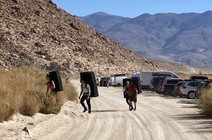
Camp like a pro in the eastern Sierra
It's climbing season in the Volcanic Tablelands managed by the Bishop Field Office. For those planning to recreate in this area, there are two nearby campgrounds to stay at, the BLM Pleasant Valley Pit Campground and Inyo County's Pleasant Valley campground. For some more great tips about camping in the eastern Sierra, please visit the Eastern Sierra Sustainable Recreation Partnership.
|
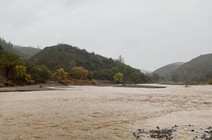
Always check ahead for area conditions, especially in inclement weather
The South Cow Mountain OHV Management Area is temporarily closed due to heavy precipitation and poor road and trail conditions. Conditions can change rapidly, so some recreation areas are occsionally temporarily closed during wet weather for safety and to protect resources. For more information, call (707) 468-4000.(BLM CA Website)
|
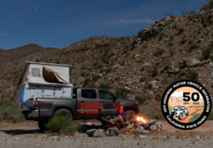
Be prepared for a successful OHV ride!
Before hitting the road, remember to pack items like a map, cell phone, first aid kit, extra fuel and a tool kit. Learn more about how you can support sustainable, safe off-highway vehicle use on your public lands. (BLM CA Facebook)
|
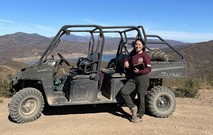
Great work from an ACE intern!
For several months, Chantell Aubut worked in the Berryessa Snow Mountain National Monument and has completed over 2,100 hours of service with AmeriCorps NCCC, assisting the Bureau of Land Management with trail maintenance, data collection, invasive plant species removal, and much more! This assignment marked the completion of her American Conservation Experience (ACE) internship with the Ukiah Field Office as a Wilderness Inventory Team Member. (BLM CA Facebook)
|

BLM California offers wild horses and burros for adoption in Tulare county Oct 29-31
The Bureau of Land Management will offer 14 wild horses and 10 burros for adoption on Oct. 29-31 at the Tulare County Fairgrounds. This is your chance to adopt your very own wild horse or burro - hope to see you there! Applications will be collected at 7:30am on Saturday, Oct. 30. (BLM CA News Release)
|
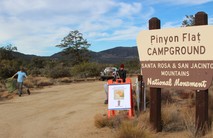
Thank you volunteers from Friends of the Desert and Backcountry Horsemen!
The Santa Rosa and San Jacinto Mountains National Monument held a well-attended, highly productive, National Public Lands Day event at Pinyon Flat Campground last Saturday. It was the final day of the yearlong celebration of the 20th anniversary of monument which was established October 24, 2000. (BLM CA Facebook)
|
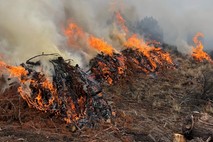
Fire crews successfully remove fuels that could contribute to catastrophic wildfires
Recent heavy rains in northeast California reduced wildfire danger enough that our crews from the Eagle Lake Field Office experienced excellent conditions this week to complete more than 140 acres of pile burning north of Susanville. The project removed stacks of limbs and small juniper trees that had been cut to improve habitat for mule deer, pronghorn antelope and sage grouse, among other species. (BLM CA Facebook)
|
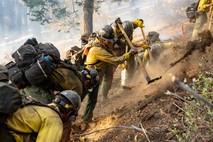
Looking for a new and exciting career in wildland fire?
Check out this Bureau of Land Management ‘We are BLM Fire’ video! There are many fire job opportunities, and more coming to USAJOBS every day. Apply for a engine, hand crew, helitack, smokejumper, dispatch, fire warehouse, or prevention/education position. We promise, it's #NotYourOrdinaryJob. (BLM Fire YouTube)
|
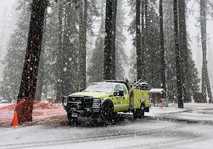
BLM fire crews continue to increase containment on KNP Complex wildfire
Due to the recent rain and snowfall, some areas saw significant moisture which was helpful to increase containment. Check out BLM California's Engine 6644 from the Central California District working on the KNP Complex on the Sequoia and Kings Canyon National Parks. (BLM Fire Facebook)
|
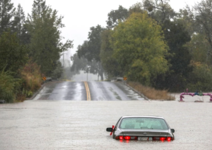
Fire season still a threat to Southern California despite rains
Record rainfall this week could mean the end of fire season for much of Northern California, experts said, but conditions in the Southland remain more tenuous, and the coming weeks could still bring fire danger. Southern California saw much less rain than the Bay Area and Sierras, and this region’s prime fire months often come later, with huge blazes of the past burning into November and December. (LA Times)
|

BLM California fire restrictions
BLM California fire restrictions or temporary public land closures reduce the risk of wildfires and protect the public. Often times, these preventative measures focus on human-related activities, such as campfires, off-road driving, equipment use and recreational target shooting, since human-related activities are the number one cause of a wildfires. Many BLM California offices have issued seasonal fire restrictions. (BLM CA Web)
|

Which predator is known for its fierce and seemingly unforgiving method of taking down the tarantula?
A. Lizard
B. Wasp
C. Bird
D. Snake
Keep scrolling to find out!
|
|

“The Bureau of Land Management plays a critical role in Interior’s efforts to address the climate crisis, expand public access to our public lands, create a clean energy future, and preserve our nation’s shared outdoor heritage. Tracy brings a wealth of knowledge in conservation and environmental policy to these efforts and a history of working with diverse communities in service to our public lands,” said Secretary Haaland. “I look forward to working with her to strengthen the bureau and advance Interior’s mission.” (BLM News Release)
|
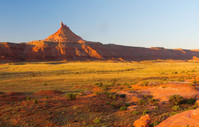
Interior Department announces next steps for Indian Youth Service Corps Program
The Department of the Interior today released draft guidelines to implement the Indian Youth Service Corps (IYSC) Program and announced that it would hold Nation-to-Nation consultations with Tribes, Alaska Native corporations, and the Native Hawaiian community on implementation of the Program. (DOI News Release)
|

Tracy Stone-Manning is sworn-in as the new Director of the Bureau of Land Management; U.S. Geological Survey crews were on the job after an "Atmospheric River" event brought significant precipitation to the western United States; we salute the tiny creatures that fly by night during Bat Week 2021. (DOI Video)
|
|

Question of the Week Answer
Answer is B - Wasp!
Tarantulas have many natural predators including larger lizards, snakes, and birds. However, the most ferocious is the tarantula hawk, a large, metallic blue and orange wasp. A single tarantula hawk can sting and paralyze a tarantula, drag the spider back to a prepared burrow, and lay eggs upon the still-living creature's abdomen. The wasp then seals its paralyzed prey inside the burrow. Upon hatching, the wasp larvae will eat the tarantula alive. Although this outcome may seem grisly from our human perspective, nature knows only one standard: survival.
Source: NPS
Photo: Forest Service
|
|
|
|
News.Bytes is a publication of the Bureau of Land Management in California.
Bureau of Land Management
California State Office
2800 Cottage Way, Suite W1623
Sacramento, CA 95825
(916) 978-4600
Send comments to the News.Bytes Team | Subscribe to News.Bytes | Unsubscribe
|
     
|
|
|